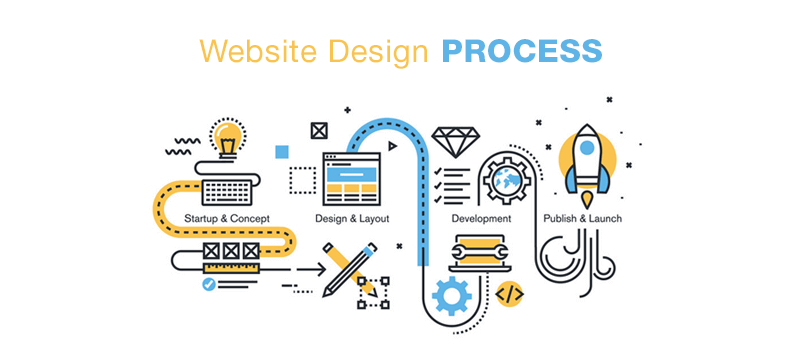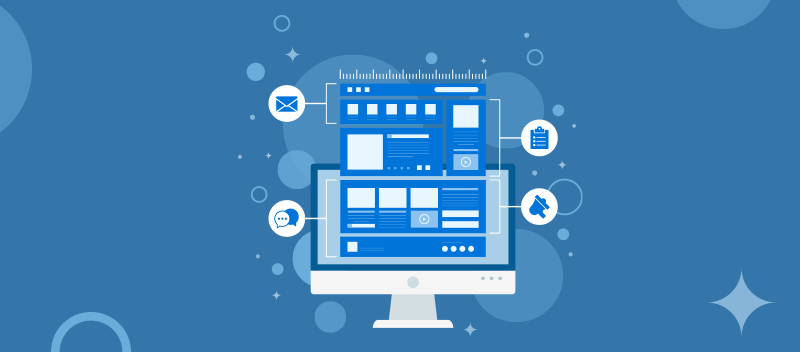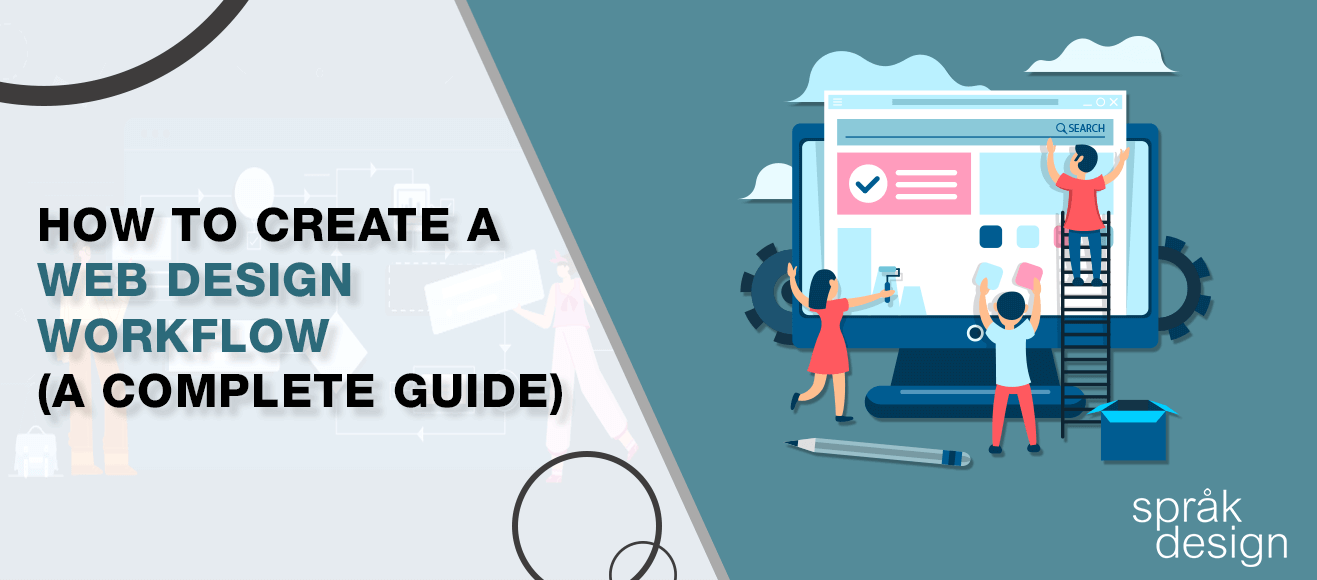How to Create a Web Design Workflow (A Complete Guide)
Last Update : 3 September 2022
Introduction
A seamless workflow will help in upgrading the web designing work and gaining more clients. It will also help web design managers to connect with other web designers. In this guide, we will discuss the tips and tricks to gain smooth workflow for web designing projects.
What is Web Design Workflow?
Web design workflow is the process of developing a website. It includes everything from planning to the launch of the final site. The object of this workflow is to simplify the web design process and keep projects on the right track.
Before we discuss the guide on website design workflow, we must first discuss the term itself.
9 Steps involved in the web design workflow

Now, we will discuss the steps included in the web design workflow in the below section:
Step #1. Understanding Client Expectations and Defining Goals, Objectives
Firstly, all the team members and clients must look at the process of web design. They must also view the full process and discuss the things to do further. If the team members feel that certain changes should be made to the website, they must first discuss with everyone and do the required changes.
It is essential to know the objectives of your website. Only then is it possible to identify and target a specific audience and provide a better user experience? Apart from that, you can also improve brand awareness after knowing the objectives of your website design process. This process will also boost sales of your new business.
Step #2. Research and Analysis
The next phase in the website design workflow process is to research and collect information such as target audience, competition, design, website objectives, industry, and so on. Web designers must ask the clients and gather all the important data related to the website designing process.
Some other important data include brand assets, logo files, and images. After collecting the important data, the web designer will analyze every detail and decide how to use logo files, color palettes, and images on the website.
Step #3. Web Site Planning and Strategies
After research and analysis, web designers need to plan how to design the website. They need to prepare a sitemap before designing the final website. Planning for website design includes UX concepts, visual design, and other things. You can use a set of website designing tools to make your website look unique from others.
Competent designers will draw wireframes to know how web pages will look. These wireframes will help to identify the important elements of a website that must be kept on the front page. After drawing wireframes, web designers need to plan strategies to design a professional and responsive web design workflow.
Step #4. Creating Web Site Structure, Layouts, Formats, Etc.
You need a strategic plan to design a good website structure that fetches organic traffic.
Based on your target markets and audiences and your business offerings, you need to think of a layout that will best support your website plans. It is important to plan a website structure that optimizes your SEO, content, UI, and UX plans. Take note of the different formats to display content, images, and videos on the website. The designers need to apply a good UX strategy to improve the website’s appearance.
Web designers will also plan font sizes and different font styles to display content on the site. Planning and deciding the structure, typography, color palette, layout, and formats is a critical phase based on which the entire website experience depends.
Step #5. Implementation of the Design as Per Schedule of Deliverables
After planning a perfect website structure, the web designers will implement the design finally. Web designers will talk with the clients and make the necessary changes. Apart from clients, the web designer will also talk with the programmers to add the required elements to the website. After taking the approval of the customers, the programmer and web designer with the full designing team will work on the implementation of the website design.
The site will also be reviewed by web engineers and developers. These professionals will test the functionality and fix issues to make the website function flawlessly. These professionals will also do coding work and use other tools to remove errors and make an engaging website.
Step #6. Adding Content and Visual Elements

Whether it is for a static website or for a responsive website design workflow, this is the stage when all the creativity and ingenious ideas need to be used. This is the execution phase, where all the content, such as images, text, graphics, videos, and infographics, are created and posted.
This phase includes the use of social media graphics, branding assets, visuals, and images. Every web designer adds different visual elements and content to enhance the look of the website.
If you have a large team of web designers, it is easy to divide different tasks among different team members. One member will create logos, while one member will create visual effects on the site. You can hire skilled content writers to develop rich quality content for a good site, whether you have chosen a static or responsive design process.
Step #7. Feedback, Modifications
The success of the site depends on the client. If the client approves the website design, it is a successful project for any web designer. After adding visual effects and content to the website, the web designer will ask for feedback from clients. If the client wants any modifications or changes to the site, the web designer will do it accordingly.
You must also get feedback from stakeholders by talking to them through video calls. You can also hold a meeting with clients and talk with them about important elements of the website. Several tools help to collaborate with the team and do the necessary changes to the website.
Step #8. Testing and Troubleshooting
The last stage in the website development is testing. As a professional web designer, you must test the website before launch. It is necessary to fix bugs and solve some other technical issues, such as buffering videos and broken links on the site. Then you must proofread the blogs and other content and rectify the mistakes.
In addition, you must apply SEO techniques on the site to improve the website’s rankings. You must check whether a site works perfectly on every mobile phone and other devices as well.
Step #9. Launch
Finally, it is time to launch the website. After launch, the web designers will make changes and edit the site if there are any errors. They will also improve the site and start using track analytics to study the behavior of the targeted audience on the website. Moreover, the website must be updated regularly.
Conclusion
Planning the website design workflow needs specialized knowledge, practical industry experience, and a high level of expertise. The success of your website as strong marketing and sales platform depends on the workflow.
Hire a web designer with a good track record to improve your web design process and create a website that brings greater customer engagement.
Why Choose Språk Design
If you want a smooth web design workflow, choosing Språk Design. It is one of the best graphic and web design service providers with 12+ years of experience. The skilled team of Spark design helps in creating smooth and engaging websites for various businesses and industries. The company has helped 1,000+ organizations build superior web designs! Contact Språk Design to know more!

